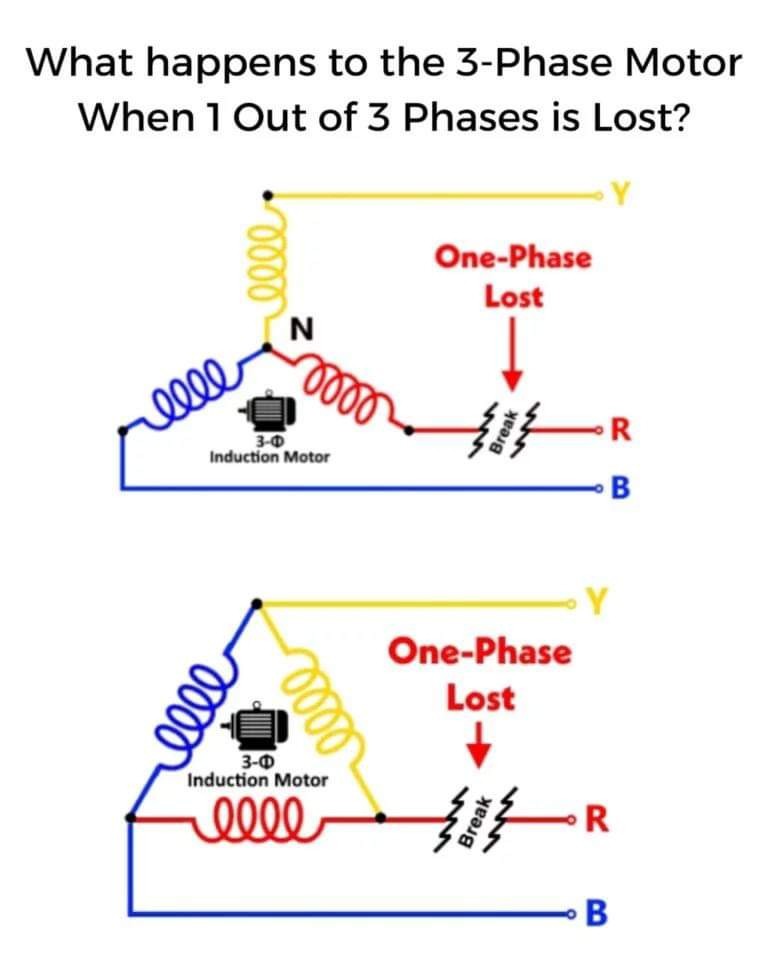Here's what happens:
1. Current surge: The remaining two phases will try to compensate for the loss, causing a surge in current. It's like trying to drive a car with only two wheels - the engine (motor) will work harder, but the ride (operation) will be bumpy.
2. Increased heat: The motor will start to heat up faster than a microwave burrito. The increased current and the imbalance in the system will cause the motor to overheat, which can lead to insulation failure and, in extreme cases, a motor fire.
3. Reduced torque: The motor will lose some of its torque, like a bodybuilder losing one arm. It might still be able to lift weights (operate), but it won't be as strong as before.
4. Vibration and noise: The motor will start to vibrate and make noise like a teenager's stereo system. This is due to the imbalance in the system, which can cause the motor to shake and rattle.
If the motor is heavily loaded, it might stall or trip the circuit breaker. If it's lightly loaded, it might keep running, but it's like driving a car with a flat tire - it's not a good idea, and it's going to cause more damage in the long run.
In summary, when a three-phase motor loses one phase, it's not a happy camper. It's like trying to play a three-legged race with only two legs - it's possible, but it's not going to be pretty.
Follow us on X (previously Twitter) SparkED













